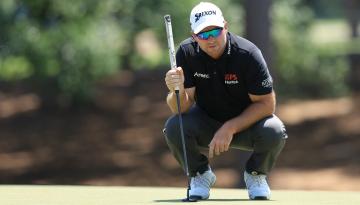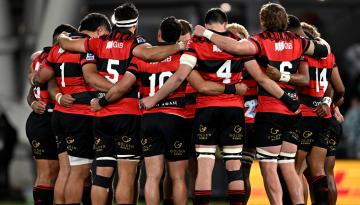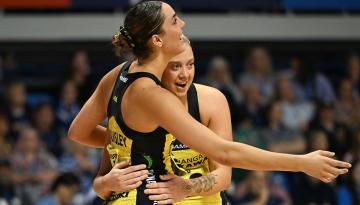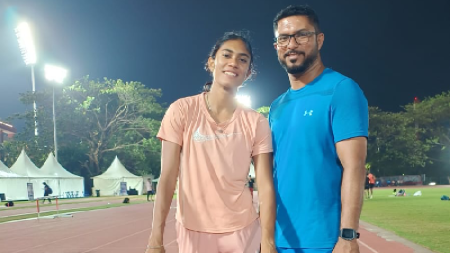Eyes on Paris prize, archers look for edge: Recreating venue, sessions with top coach
In a corner of Haryana, there will soon be a small slice of central Paris.
It won’t be an exact replica of the iconic gardens of Les Invalides, where the Olympics archery competition will be held. But the lawns of the Sports Authority of India’s (SAI) Sonepat centre will be transformed into a field of play that will be “very similar” to the venue of the games, said Indian archery’s high-performance director Sanjeeva Singh.

Be it the platform on which the archers will stand and shoot, the colour scheme of blue, red, green and purple, the positioning of the shot timers or even the big LED screens near the targets, the Archery Association of India (AAI) is in the process of recreating the Olympics venue at the training base to prepare the athletes for what to expect in the French capital.
”For the first time, we are trying to recreate the field of play,” Singh said. “Right now, we are training more and more keeping in mind what we are going to get at the Olympics.”
But the preparation for the Paris Games, which will begin on July 26 (archery gets underway a day earlier), isn’t merely about the look and feel. In Sonepat, the archers are also getting a helping hand from a top name from the most successful archery nation, South Korea.
Kim Hyung Tak, a renowned coach who has trained many a world and Olympic champion, held a special session with India’s archers, minutely scrutinising their techniques with revolutionary technologies and making timely interventions.
“The main focus is the Olympics and I noticed some really high-level skills. What is needed now is to plan well for the next two months. Making a good programme is important,” Kim told The Indian Express.
 Coach Kim Hyung Tak has held a special session with India’s archers.
Coach Kim Hyung Tak has held a special session with India’s archers.
The brief camp last week was the first of at least two before the Games, with the other one to be held when the archers travel to South Korea for a World Cup later this month. “All this is important if we are aspiring for a medal,” said India coach Sonam Bhutia.
Since the London Games, when they began to show some kind of promise to contend for medals, India’s archers have fallen short every time. Now, as has been the case with the build-up to the three previous Olympics, they have been flying high on the back of a decent Asian Games performance and a solid start to the 2024 season.
This time, they are desperate to prove that the good form isn’t a false alarm. “This is one of the missing links,” said Singh, referring to the sessions with coach Kim and recreating the venue.
Singh has been credited with turning India into a force in compound archery, a non-Olympic style where the country made an unprecedented clean sweep of gold medals at the Asian Games last year. Now, the focus is on the recurve archers and getting Kim to train the Indians is part of the plan.
“There are only two coaches who train archers from outside Korea. And one of them is Mr Kim,” Singh said. “He has very good analysis software called Dartfish. It’s a tool to measure the forces and angles of the body which the normal eye cannot decipher.”
Kim, coach Bhutia said, uses high-definition cameras to capture an archer’s shot. He then feeds the images into the software before beginning the “fault-finding” mission.
Some of India’s leading archers, including Deepika Kumari, Atanu Das, Tarundeep Rai and Dhiraj Bommadevara, have lined up to take lessons from him. Not just in Sonepat but also by travelling to his world-renowned academy in the South Korean city of Goesan.
In December last year, Deepika said she had learnt things that no one had taught her before when she visited Kim, whose book is considered the sport’s Bible.
Kim said his interventions are subtle, yet critical. For instance, to Deepika, he pointed out that her little finger was bending inside when she was releasing the arrow. “I made it more towards the outside. It’s a different release,” he said.
With Bommadevara, who recently won a team gold medal at a World Cup, Kim said he changed the “shooting method”, making sure the left finger, elbow and release point were all synchronised.
These are only two examples of what have been a series of tiny changes. But Singh said the impact is visible in the groupings, the collective pattern of shots on the target. That, he added, was because of the use of high-definition cameras and top-level software.
“Sports science will be one big thing at the Olympics that will be a deciding factor,” Singh said. “Psychologically there was a lot of pressure on them (at previous Olympics) but we are getting used to it because we have started winning at the World Cups. Now, we are training more keeping in mind what we are going to get at the Olympics.”
Recreating the venue hence became essential, Singh and Bhutia said, to programme the archers’ minds.
The archers and the team management carried out a recce of the venue when they visited it last year and are now replicating it in Sonepat — from raising the platform two feet above the ground level, just like Paris, to keeping the timers 25 metres from the shooting line and beaming images on the giant screen.
“We are trying to build LED screens so that we can see ourselves shooting so that when we go there and look at the visuals and scores, we don’t get the jitters,” Singh said. “Even the colour combination will be more or less like Paris. When you are doing the same things, you feel familiar. Our aim is to ensure when they are in Paris, they feel at ease.”
Disclaimer: The copyright of this article belongs to the original author. Reposting this article is solely for the purpose of information dissemination and does not constitute any investment advice. If there is any infringement, please contact us immediately. We will make corrections or deletions as necessary. Thank you.





